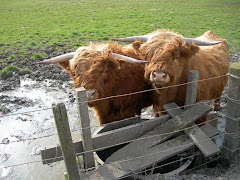Seasoned trout fishermen know that early spring is the best time to attend their favorite trout fishing location.
Spring is here and to most die-hard fishermen this means the spring trout fishing season has begun. Seasoned trout fishermen know that start of March is the best time to visit their favorite trout fishing hole. Grabbing their spoons, taking out their fishing lines, and sharpening the hooks o.
In the spring, the water is usually higher and much murkier due to the spring storms and melting ice. The trout are often feeding very aggressively during March and April months, opportunistically trying to grab anything that resembles food in the quickly moving water. To be able to eat though, they must be able to locate it via the mud rich, stained water.
Flashy Spoons
The main thing to remember when trout fishing early spring is that the flashier the fishing lure, the better. The most popular lure among the trout fishing experts is the spoon, very flashy by nature, most all spoons put off flash and vibration when pulled through the water with every type of retrieval method.
The best spoon to use also depends on the type of water being fished, determining factors are also the spoons weight in relation to its' length. Wide streams, deep holes, and stronger currents call for a heavier spoon, which can be cast further and worked faster than lighter spoons.
Water color
The water color is another determining factor when choosing the correct swimming action as well as the proper colors and finishes. Tighter wobbling spoons are great for clear water, while a wider wobbling spoon is the ace in the hole for dirty, murky water. The wider wobbling spoon sends out larger pulses and makes a wider visible impression in the water; and both these qualities can help the fish to find the spoon.
It is difficult to guess why a particular color or finish would produce more strikes than another one day and not the next. Still, the basics are, metal finishes seem to work best for clear or slightly dirty water while very dirty water calls for brightly painted or very flashy holographic strips on the spoon. Neon colors such as orange and hot pink are designed for the trout to notice in dirty water. On the other hand, black makes an easy to see contrast even in the dirtiest of waters.
Tips To Catching Spring Trout On A Spoon
One of the biggest advantages that the trout fisherman has in early spring is that the strong currents that accompany the high water levels will position the fish in obvious areas and make the feeding alleys very easy to recognize. The trout should hang out in the only places they can, behind obstructions that slow the water current: rocks and logs.
Spoons can be fished in a variety of ways to catch the trout both near the surface and on the bottom. The general idea is to cast either upstream or cross current. Downstream casts equal upstream retrieval, most spoons do not operate properly with the constant current against them, this also does not suit the genre of natural foods that are also floating along with the current.
The best overall way to work a spoon in trout water is to make short casts upstream and cross current while practicing a combination of rod sweeps and stops that put the bait in action as the water carries it downstream. This puts the lure right over the heads of the trout in the proper direction that they are used to seeing their food come from.
Conclusion
With a bit of practice and a taste for trout, you should be slaying the springtime trout in no time at all. This is THE chance ever to grab a hungry trout in the whole year. Spring has Sprung for trout fishing, so grab your best fishing gear and catch as many as possible!
Article Source: http://EzineArticles.com/?expert=Ted_Koppel
Ted Koppel - EzineArticles Expert Author
Subscribe to:
Post Comments (Atom)









No comments:
Post a Comment